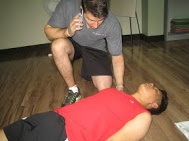
To be able to provide heatstroke first aid it is important to adequately define a heatstroke. This is a condition that occurs when the body fails to carry out its own temperature regulation. The end result is elevated temperatures of up to 40.6 degrees Celsius. This condition is characterized by a number of symptoms that you must be on the lookout for, and they include:
- Loss of consciousness for a few seconds
- Occurrence of seizures, also known as convulsions
- Labored breathing which may differ in difficulty
- Once such a patient is exposed to high temperatures, temperature readings recorded from the rectum may soar to as high as 40 degrees Celsius.
- Increased heart rate.
- The patient will be in a state of confusion, and may experience anxiety.
- The skin may become dry, flaky and reddened.
- Vomiting that is accompanied by diarrhea.
The gravity of such a situation is what makes it very important to know what the procedures for the heatstroke first aid are. So serious is this condition that even with prompt emergency first aid, there is still a possibility that the victim will suffer long term complications.
Before you provide first aid, you need to call for emergency medical first aid. Once you have done this, you need to follow the following steps:
– Transfer the victim to a dry and cool place, away from the glare of direct sunlight.
– Get rid of any extra clothes that the individual may have so that they are able to cool down as fast as possible. The idea of doing this when providing heatstroke first aid is to get as much skin as possible exposed to cool air.
– You may opt to cool the victim by sponging cool water on their body. To help with this, wrap ice packs in a towel and hold them at the neck, armpits and groin. These locations are ideal because there are numerous blood vessels present.
The other alternative is to use a fan to do this. You will also look out for the signs of advancement of the condition.
What shouldn’t you do when providing emergency heatstroke first aid?
– Do not immerse the victim in an ice bath in an attempt to lower the body temperature. In addition, you should not ice-cold water as this can easily cause the body temperatures to plummet rapidly to very low temperatures, and that is just as critical a condition.
– Do not administer either aspirin or acetaminophen in an attempt to lower the body temperature. The problem with these medicines arises from the way the body responds to heatstroke.
– As mentioned in the symptoms of heatstroke, many victims will drift in and out of consciousness. For this reason, it may not be safe to give fluids. If need be, you have to assist the victim by making sure they sit up straight to avoid choking.
The importance of heatstroke first aid is very crucial to avoid complications.
